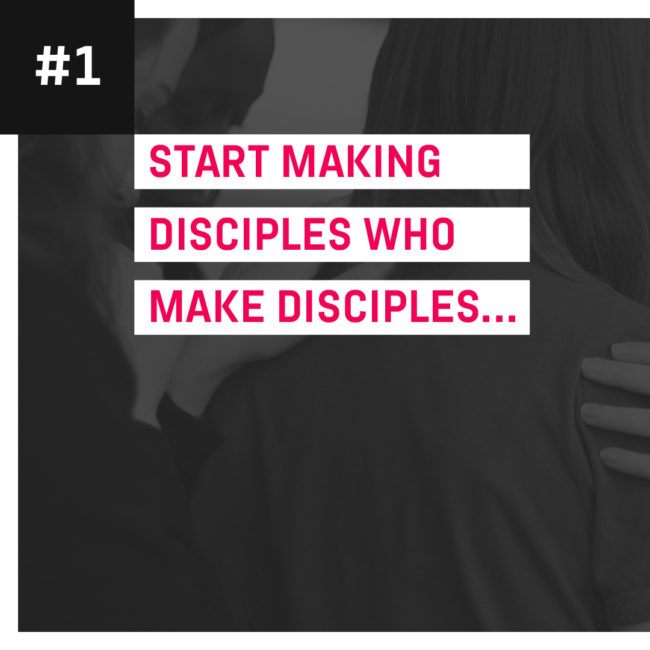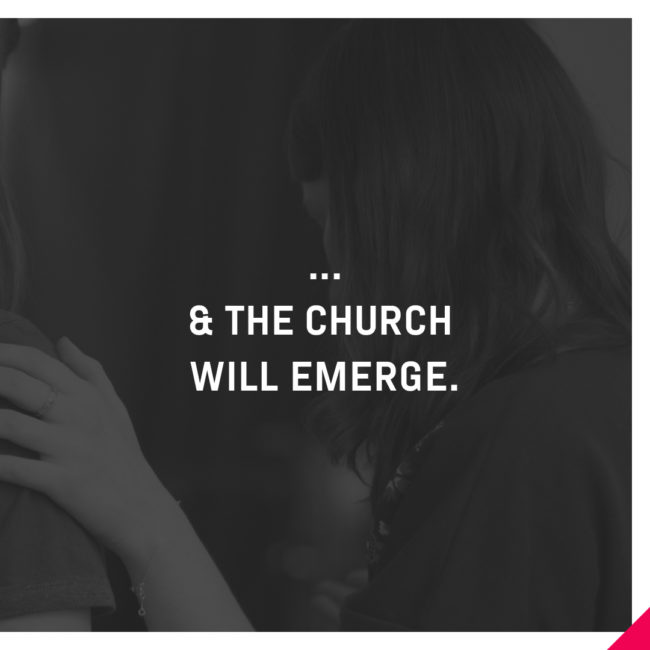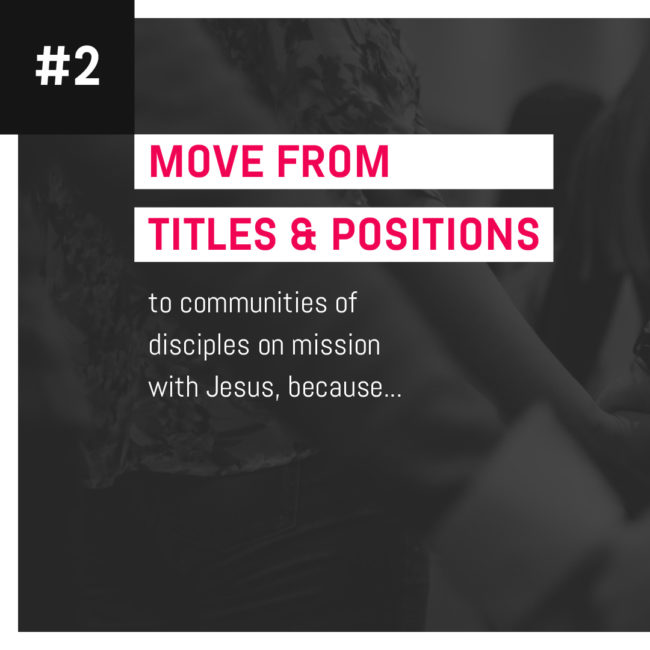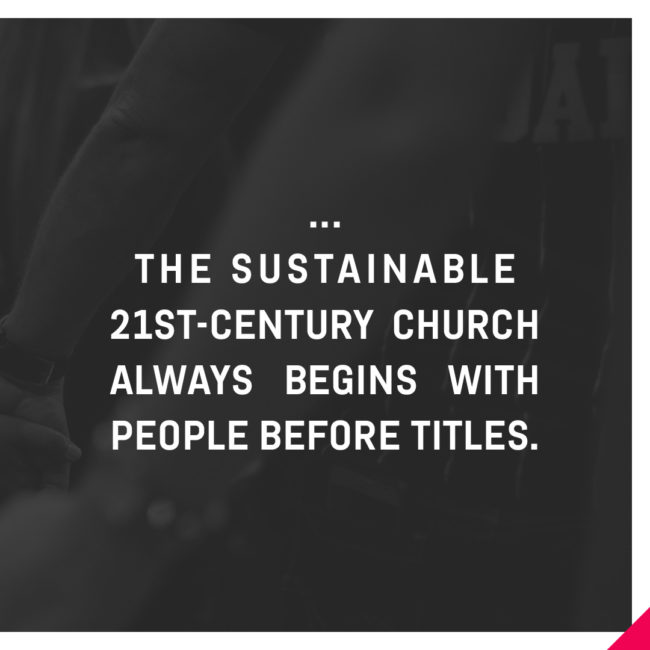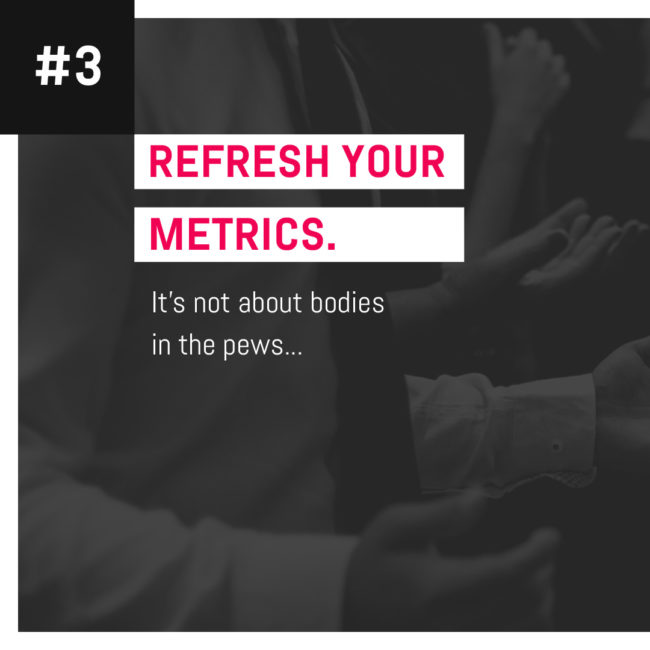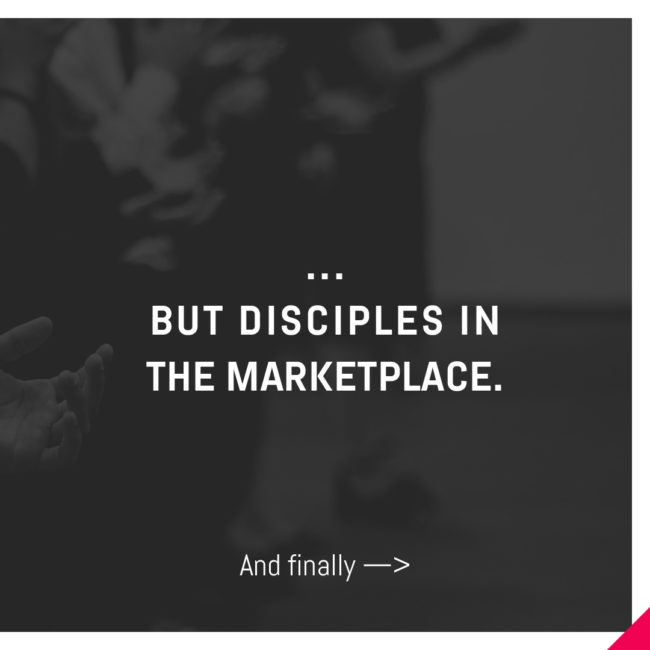Steve Pike on Catching the “Next Wave” for Church-Planters
Steve Pike of Next Wave and Urban Islands Project is no stranger to innovation. He started early in his ministry life by planting Church on the Terrace, a missional congregation in Ogden, Utah.
It was 1990, and Steve had already served as a youth pastor in three separate churches. He had hundreds of students in his ministries. But Steve felt called to a place where people weren’t very interested in the message of Jesus.
Ogden, a town of primarily Mormon families, became his first extended experience in what he would call a “hard place.”
He said, “That experience opened my eyes to the power of somebody making a long-term commitment to one place on a mission from God. We didn’t have a strategy, but we decided to be patient with people as they made a journey toward faith in Christ and beyond.”
During that time, Church on the Terrace grew to seven hundred members and four hundred twenty-five in weekly attendance.
They also helped start five more churches — fantastic results for “Mormon country.”
That’s when The Assemblies of God asked him to lead Church Planting and Development for the Rocky Mountain District. Later, in 2006, he became their National Church planting director. In those two positions, he discovered which principles from his experience would apply to churches beyond Ogden.
Then, in 2008, he helped found the Church Multiplication Network (CMN).
In that role, Steve said, “For eight and a half years, I sat in a seat where I could help oversee the launch of between three hundred and four hundred new congregations a year. And we received fresh data annually. It was an eye-opening experience.”
Toward the end of his tenure at CMN, he noticed a growing trend across America. In his book, Next Wave: Rediscovering the 21st-Century Church, he describes it this way:
“…most new church starts were occurring in suburban communities. At first, I had no problem with that, because suburbs were where most Americans were choosing to live. In fact, the mega trend in the 1970s and 1980s was migration from city centers to the rapidly growing suburbs. When people left the cities for the suburbs, churches followed them—a smart missional move.
“But over the past 25 years, the migration trends have become more complicated. In some metropolitan areas, city neighborhoods have actually grown more rapidly than their suburban counterparts. Almost without exception, city neighborhood populations are growing. But what surprised me was not seeing a corresponding trend in the starting of new churches in urban neighborhoods. More people, less Church. This struck me as unacceptable.”
Helping Churches in the 21st Century Reach People with the Message of Jesus
Steve said, “The reality of a city is this: They’re neighborhood-based. A city is a thousand islands smashed together. Unless you enter a city with a well-known existing brand (like Hillsong), you can’t apply the same metrics to a city church that you do in a suburban setting.”
He also found that many city-based church starters would feel lonelier than their suburban counterparts.
He’d see a church planter receive seed money, go to a city, then find her or himself with no support network and little on-the-ground intelligence.
These pastors and their supporters hoped to see the same kinds of results they saw in the suburbs. But city churches demanded a different mindset altogether.
Steve took this challenge seriously. He believed city-based faith communities would be more effective if several could start at the same time. Pastors could form cohorts where they would pray together, support each other, and share ideas.
As he analyzed city ministry, Steve also saw Twelve Shifts — cultural trends which demanded a response from the Church as a whole. They included a completely different mindset around:
- Ecclesiology
- Discipleship
- Funding
- Team-building
- Architecture
- Community participation
- Launch timeline
- Metrics
- Church habits
- Core values
- Multiplication
Plus, #12, a recommitment to Spirit-dependence. (Download the Introduction to Steve’s book — along with his Twelve Shifts — here.)
Steve was all in.
He founded a non-denominational organization called Urban Islands Project. Urban Islands helps city church planters form cohorts and reach a given city together.
But he wasn’t satisfied merely watching others put his ideas into practice. He needed to be where the action was.
He moved from the small city of Springfield, Missouri, to Denver, Colorado. There, he formed his first cohort of pastors — “the Denver 7.” Each started a faith community in a different neighborhood. They met weekly to discuss their discoveries, share ideas, and pray for God to move.
Soon, Steve had created cohorts of church-starters in Minneapolis, New York City, and Nashville.
But, though he had opportunities in other cities, he didn’t have the resources to expand. He needed a new strategy to share his ideas and create ways for church planters to cross-pollinate.
That’s when he first contacted his longtime friend and ArtSpeak co-founder, Jason Bowman.
When Steve shared his Twelve Shifts, Jason said, “Yes, these ideas apply to the city, but they’re beginning to apply everywhere else, too.
“I live in the suburbs, and most of my neighbors aren’t Christians. Your Twelve Shifts are exactly what it would take to reach them.”
Steve said, “It was a rolling revelation. The Twelve Shifts weren’t about bringing the Church to cities. Now, the cities are creating the dominant culture.
“So if we can figure out how to plant churches where the culture is being born, we can effectively plant churches anywhere.”
Along with the rest of the team at ArtSpeak Creative, Steve and Jason started to work on a strategy to share Steve’s message — along with the help that only comes from being part of a cohort — to anyone starting a church in a hard place.
Catching the Next Wave: Steve Pike’s Book and Online Community
First, Steve worked with Jason and the ArtSpeak Creative team to complete a full Messaging Blueprint. Steve had an acute sense of his organizational identity and had clearly defined who he was best suited to help.
ArtSpeak compiled this information, along with a detailed lexicon Steve had started to use in all of his communications.
During this Strategic Messaging phase, the ArtSpeak branding team worked with Steve to craft value propositions, a Core Story, and this one-liner to help him share his organizations’ heart with others in a single sentence:
Urban Islands equips and empowers 21st Century leaders to start and sustain healthy faith communities in hard places, wherever in the world they may be.
Steve also decided to write a book about the Twelve Shifts. (Download the first chapter of Steve’s book — along with his Twelve Shifts — at the bottom of this page.)
Jason and Kirk Hadden (ArtSpeak’s Creative Director and co-founder) loved the book. They started looking for ways to help bring Steve’s ideas to the broader Body of Christ.
This book wasn’t Steve’s first publication. He’d already written two insightful books about the Church: Leading Church Multiplication and Total Fitness for Your Church. (Both are available on Amazon.)
Steve said, “These are good and helpful books, but when it came to Next Wave, I felt like, ‘This message really needs to get out.’”
To make sure this book reached the maximum number of people, he leaned on ArtSpeak to help edit, then design, publish, promote, and launch the book.
But Steve doesn’t like the spotlight. So when it came to helping get Next Wave: Discovering the 21st Century Church to the marketplace, he felt ambivalent.
“The book launch process was both terrible and wonderful at the same time. I’m not good at self-promotion. I need others telling me what to do.”
At the same time, Steve partnered with ArtSpeak to launch the Next Wave Community. Built on the Mighty Networks platform, he began to facilitate conversations with church starters around the country who were currently on mission.
The book and Community started working together in ways he couldn’t have anticipated.
Continual Innovation: The Book + Community Model
Steve’s new book received heartfelt endorsements from church planting leaders across denominations, including:
- The Assemblies of God
- Norwegian Pentecostal Movement
- The Wesleyan Church
- The Anglican Diocese of the Mid-Atlantic
- And others
Coupled with a strategic marketing plan, Next Wave: Discovering the 21st Century Church became an Amazon #1 Best-Seller the day of its release.
And Steve keeps hearing from people across the country about his book. On the day he spoke with ArtSpeak for this article, Steve said:
“A church planting director decided he wanted to buy a copy of the book for every pastor in their district — five hundred books — just today! That was shocking to me, but the book made a profound impact on him.”
He received a note from another church planting director saying they decided to shift their organizational strategy and use the Next Wave metrics for all of their new churches.
But Steve understood the book was only part of the picture. He said, “Even as I was writing the book, I knew some of the practical ideas I presented would be obsolete almost immediately. I didn’t want people to replicate the ideas.”
For Steve, the Next Wave Online Community is where people can work together to apply the ideas in the book to their unique context.
“I’ve had ‘aha moments’ as a member of the Community myself, and I’m supposed to be the expert!
Another benefit to the online Community was this:
“We were ready for COVID. It didn’t disrupt us at all!”
Since its launch, the Community has featured insightful conversations with special guests like Mark Batterson and Alan Hirsch. Still, many of its most meaningful moments have nothing to do with those events.
Instead, they come when pastors can share their on-the-ground experiences with the rest of the community.
One community member, Paul Durbin, leads Belay Church in Boulder, Colorado. When tragedy struck in Paul’s city — the mass shooting at a King Soopers supermarket — Paul was able to discuss his ministry experiences with the rest of the Community in the moment.
It’s become what Steve hoped it would be: Church starters helping each other bring Jesus’ message to the hard places, wherever in the world they happen to be.
Being Patient with Process
When it comes to working with ArtSpeak, Steve says, “The experience has been really positive. ArtSpeak’s cost fits within the market, but the value you get is way higher than someone who’s ‘just in it for the money.’
“What I like about ArtSpeak is they start with questions like, ‘Where do you want to go?’ They asked questions about me. I had to be patient with the process because it felt like nothing was happening for a while.
Learn more about Steve Pike and Next Wave by downloading the first chapter of his book below.
How Can We Help You?
ArtSpeak Creative helps life-changers reach more people.
Whether you’re a church, thought-leader, non-church ministry, or just an organization built around the Jesus way, we’d love to learn if we can help you on your mission.
For a free 30-minute consultation, reach out.
Get your free download of the introduction to Steve’s book here.

